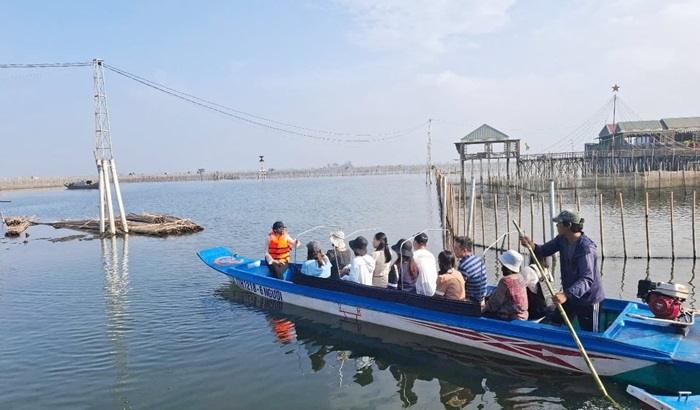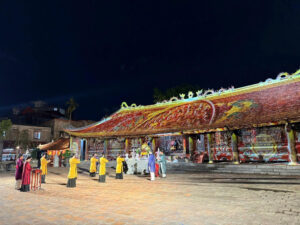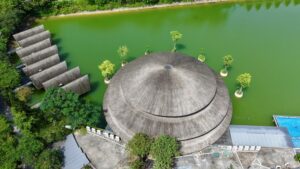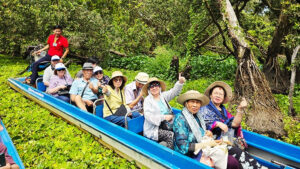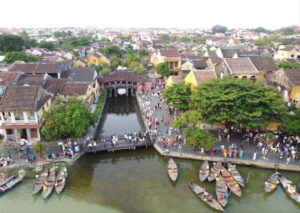The stilt house of the Thai ethnic group is not just a shelter. It’s a place where many cultural values are preserved.

Stilt houses of Thai people in But hamlet, Nam Xuan commune, Quan Hoa district, Thanh Hoa province (Photo: Hong Hanh)
From Muong Lat district center to But hamlet in Nam Xuan commune is about 7km. The village is at the foot of Pha Đay mountain, surrounded by a vast forest. The weather here is cool and fresh all year round. All the Thai families here live in traditional stilt houses, adapted to life in the mountains and forests, built to protect them from wild animals and heavy rains. The floor of the house can be reached by two staircases. By tradition, a staircase must have 5, 7, or 9 steps. Ha Van Xuan, a resident of But village, says that in the past the front stair was for men, and the back stair was for women.
“The stairs, for Thai people and for other ethnic groups, are the soul of the stilt house. People pay much attention to the stairs and build them with strong wood. They prefer wild mulberry wood, as they believe mulberry wood prevents evil spirits from entering the house to disturb the owners. My stairs are made of mulberry wood, which is sturdy, termite-proof, warp-proof, and capable of repelling ghosts,” said Xuan.
After building the house’s frame, they lay the floor, install the stairs, and elaborate the kitchen. The kitchen is an important space and people pay much attention to building the stove.
They invite a shaman and people who have a prosperous life and good children and grandchildren to perform a ritual to inaugurate the kitchen which includes placing different kinds of leaves on the stove. Respectable people from the wife’s family are invited to place the main kitchen stone and tri-pod stones for cooking. Every house has two kitchens, one inside and one outside the house.
Inside the house the most solemn place is reserved for the ancestral altar. Ha Cong Chuc, the head of But hamlet, said: “The Thai’s traditional wood houses are hand-built using hammers and axes. New stilt houses, made by machine, are different from the old ones. We live in an old stilt house. Normally an old stilt house has 4 or 5 rooms, but sometimes it can have as many as 7 rooms.”
72-year-old Luong Thi Nha, says her stilt house was built 30 years ago. “The women collected palm leaves in the forests. In the past, we had to carry palm leaves in papooses. Each house needed thousands of palm leaves. After building the house, we prepare a meal of pork, steamed rice, and vegetable soup and invite the villagers to celebrate.”
Like other ethnic groups, the Thai have a very strong sense of community in their daily life and production. When a family builds a house, all the villagers come to lend a helping hand.
Ha Van Xuan said: “Thai people are very united. If there is a dilapidated house, they call each other to repair the house. People bring rice balls and carry axes into the forest, chop down the trees, and carry them home. When a family builds a house, the villagers bring chisels and axes to help them. All the houses in the village were built with the neighbors’ help.”
But village has 100 families living in old stilt houses built by their ancestors. These stilt houses, which have been here for decades, with architecture that is becoming rare, are an attraction for tourists who come to explore the traditional Thai culture.
Giàng Seo Pùa, Vĩnh Phong


